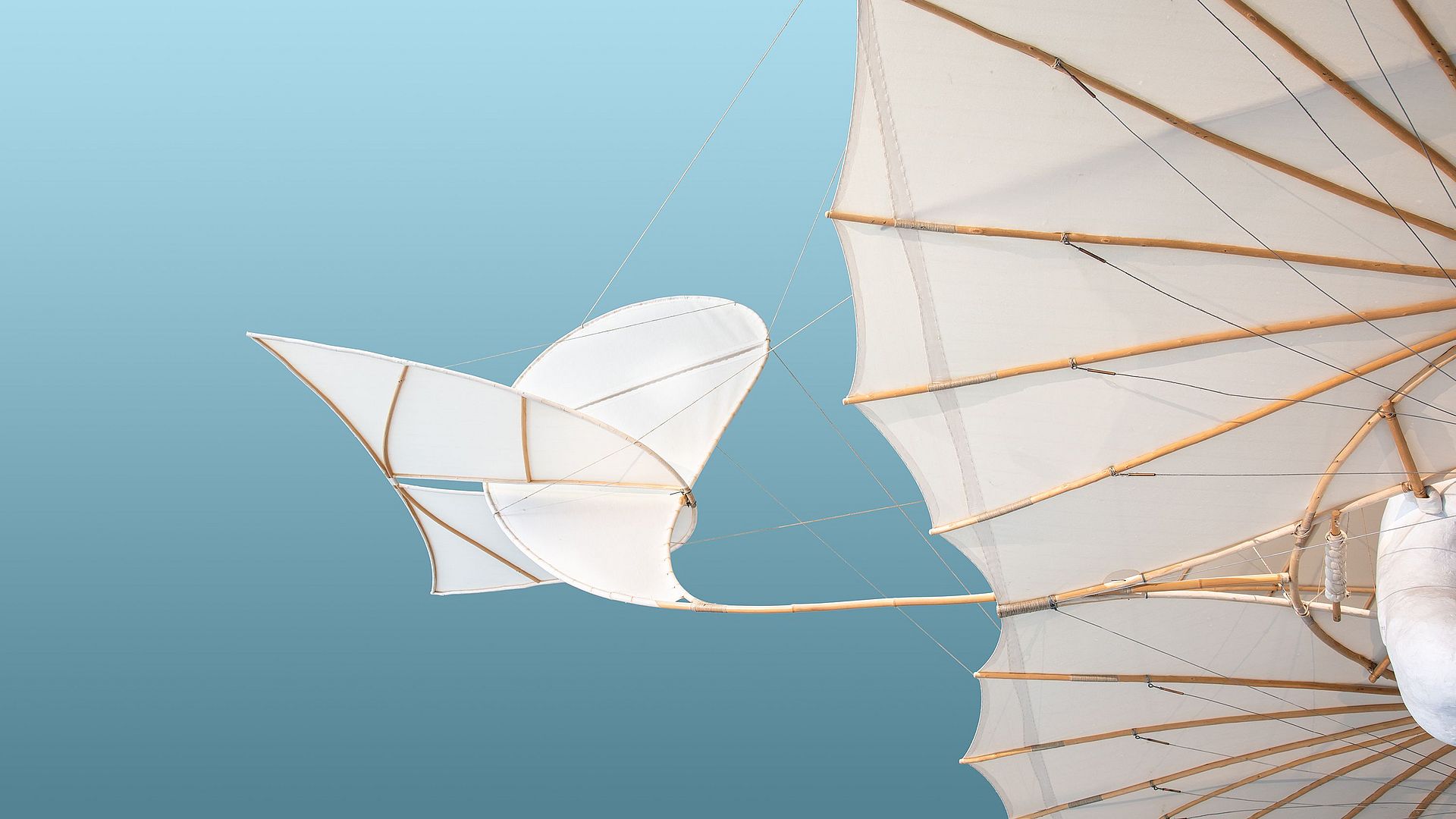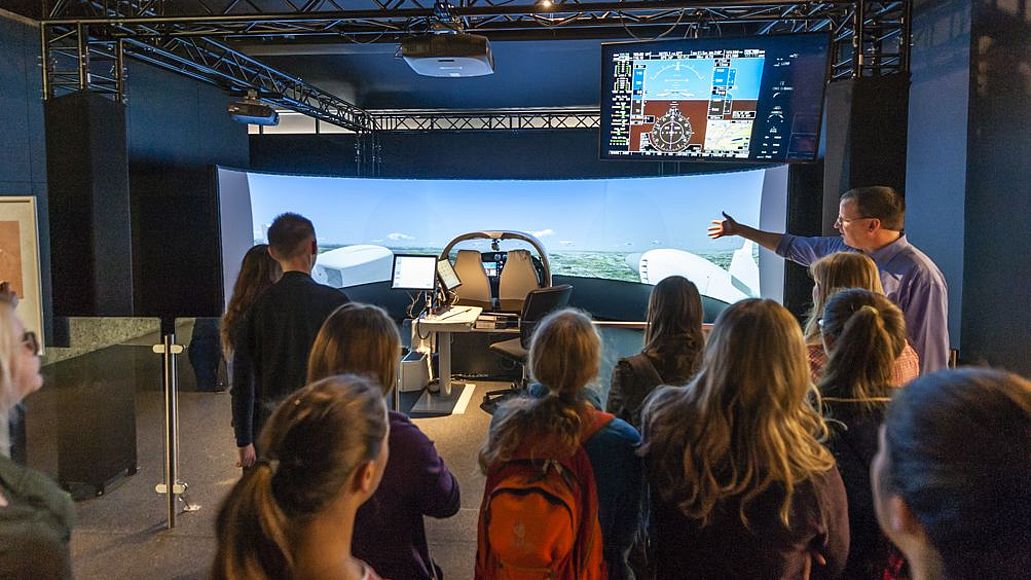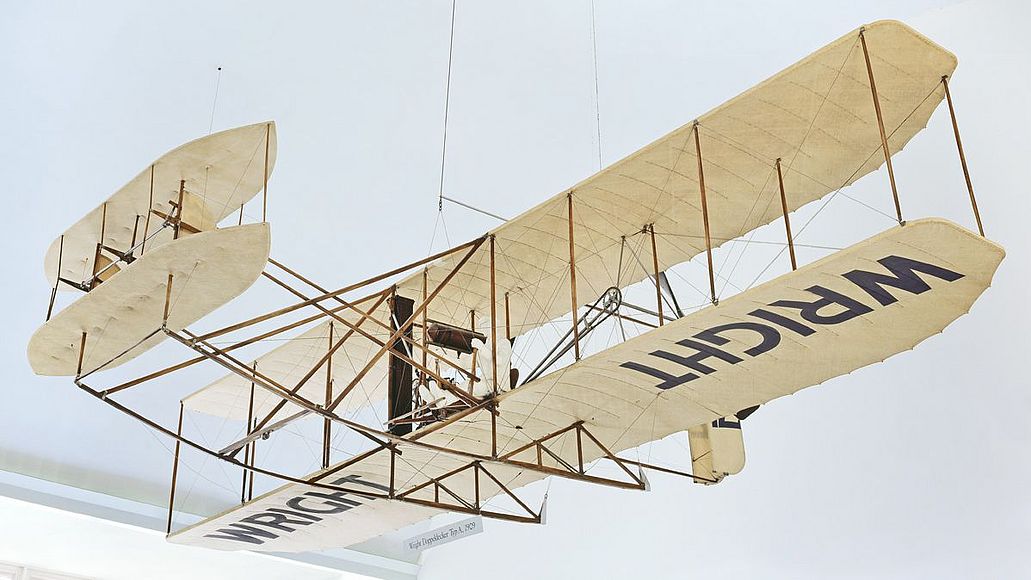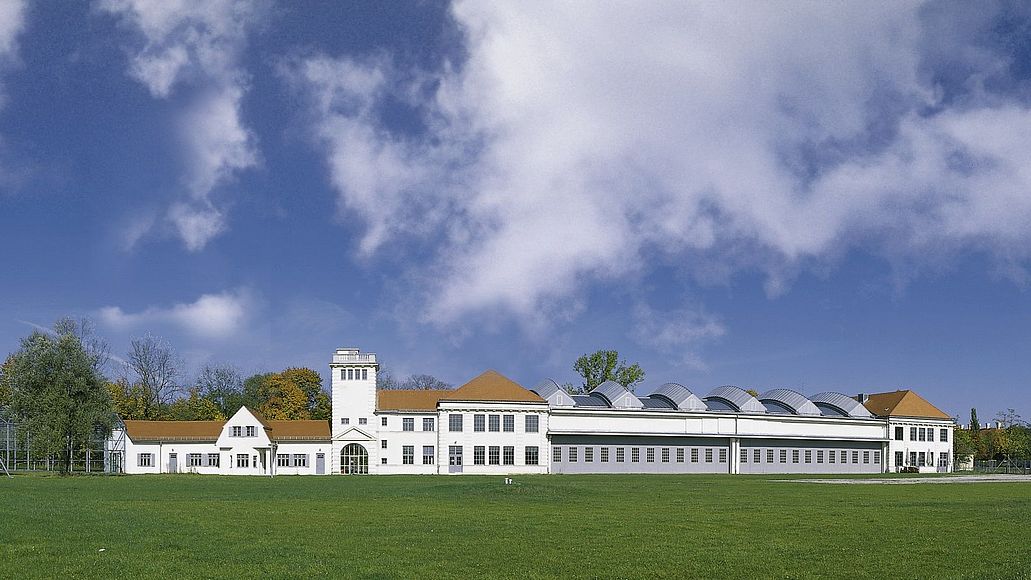
Photo: Deutsches Museum | Christian Illing
Traffic Mobility Transportation
Historic Aviation – How Mankind learnt to fly
Aviation pioneers built daring flying machines, and balloons ventured into unknown heights. The enthusiasm for motorised aircraft and airships was huge – as was their military potential.
How did Historic Aviation begin?
When people began to learn from nature, aviation pioneers built daring flying machines: people ventured into unknown heights with hot-air balloons from the end of the 18th century. Around 100 years later, Otto Lilienthal managed to glide like a bird with his glider. He discovered the secret of buoyancy, to which the Wright brothers added a motor for propulsion and flight control a few years later in the USA. Thanks to them and many other engineers and technicians, enthusiasm for planes and airships grew across the globe until World War I – as did their potential for military destruction.
12 secondswas the length of the Wright brothers’ first flight on 17 December 1903 in Kitty Hawk.
37 metreswas the distance covered by Orville Wright with the Wright Flyer.
3animals were the first passengers in a balloon on 19 September 1783: a sheep, a duck and a rooster.
Exhibition Themes
Great similarity with the flight of a shuttlecock: a dipterocarpus seed. Photo: Deutsches Museum
Flight in Nature
On the basis of specimens and fossils of gliding plant seeds, insects, flying dinosaurs and birds, this exhibition presents various forms of flight in nature. A video station shows short films on the types of flight in the plant and animal kingdoms, as well as a movie about human-powered flight. The films provide vivid introductions to the subject of buoyancy and flow behaviour and, in spite of all the fundamental similarities, illustrate the differences between the paths of nature and technology. The first successful human-powered plane in Germany, the Musculair 1 created by Günther Rochelt, rounds off this theme.
Diorama of the ascent of the Montgolfière, 1783. Photo: Deutsches Museum
Balloons
Mankind made his first ascent into the air with a principle that differs fundamentally from the kind of flight seen in nature: with a balloon. In this exhibition, a diorama illustrates this first form of “air travel”, which took place in 1783. To achieve the necessary buoyancy, the balloon was filled with hot air. Hydrogen, which was later introduced as the lifting gas for balloons, was much more explosive.
Balloons attracted a lot of attention. On the eve of the French Revolution, they were seen as a symbol of enlightenment and of the spiritual and social beginning of a new era.
The nose of the Zeppelin LZ 127 circumnavigated the world, Deutsches Museum, Inv.-Nr. 70696. Photo: Deutsches Museum | Christian Illing
Airships
Airships were a technical upgrade to the balloon. They became possible around 1900 because lightweight and fast-running petrol engines were available to power them. Count Zeppelin’s airships were particularly popular in Germany and throughout the world. A “Zeppelin” – such as the LZ 127 – had a rigid metal frame that was covered with silver-coloured fabric. The lifting-gas cells were installed inside the airship. The airship’s real significance was as a means of long-distance travel for the upper classes. In the 1930s, Zeppelin airships began to make regular flights across the Atlantic. Their arrival in New York, USA, was a real media event.
This is how Otto Lilienthal took off from the “Fliegeberg” hill in Berlin with his glider. Photo: Deutsches Museum
The Beginnings of Aviation
After having studied the flight of birds since the 1860s, Otto Lilienthal achieved the first successful glider flights from 1891. Lilienthal laid the foundations for the scientific research into and development of flying technology. In 1874, he made a pivotal finding: the curvature of a wing profile was critical. The Wright brothers in the USA built upon these and other insights. They established the basis for the aerodynamic control of their motorised Flyer, which they used to make their first flight in 1903. As early as 1908, the Wrights attracted international attention on demonstration flights in Europe. They soon aroused the interest of the military. While World War I, which began in 1914, was incredibly destructive, it nevertheless served as an engine for progress and led to a previously unimagined range of aircraft models and increase in performance, which became a fixture of warfare within a few years.
“Once you have tasted flight, you will forever walk the earth with your eyes turned skyward, for there you have been, and there you will always long to return.”
Inside the Historic Aviation Exhibition
Tour through the Historic Aviation Exhibition. The film is currently only available in English.
Volker Füßssmann from the Exhibition Service guides you through the Historic Aviation exhibition and presents its highlights.
Not just for Children
Curator Andreas Hempfer shows you the Graf Zeppelin airship in the Historic Aviation exhibition. This film is currently only available in English. In the children’s book “Stoffel fliegt übers Meer” (Stoffel flies over the sea) (1932), a small boy has adventures as a stowaway in a Zeppelin. So what does that have to do with the aviation exhibits at the Deutsches Museum? See for yourself! (Running time: 4 minutes)
Virtual Tour
Discover the exhibition in 360°: click the mouse or touch the screen to look around in all directions. The virtual tour also includes text, films and audio information for many of the exhibits.
Virtual Tour through the Historic Aviation Exhibition
Facts
- 942 sqm exhibition area
- The exhibition is on Level 1.



